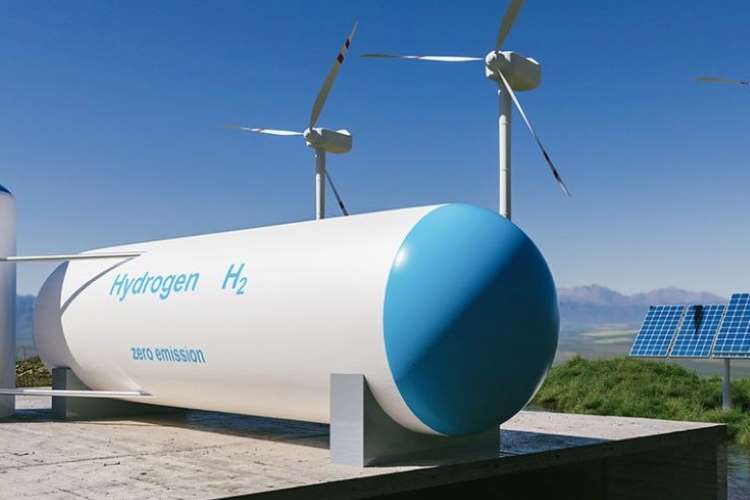India’s pursuit of sustainability and its transition to clean energy face significant challenges as it strives to become a global hydrogen hub. A primary concern is the limited resources allocated to the green hydrogen mission, exacerbated by issues such as subsidies that pale in comparison to those provided by Western nations and tepid domestic offtake. In the first year of production, green hydrogen producers receive a maximum of Rs 50/kg for up to 450,000 tonnes of clean fuel. This cap decreases to Rs 40/kg in the second year and Rs 23/kg in the third year, highlighting the government’s underwhelming incentives for green hydrogen production.
India seeks to attract Rs 8 lakh crore in investments for the green hydrogen value chain. However, analysts express scepticism, as the government’s modest allocations may not entice investors. In the initial phase, the government plans to fund 1.35 million tonnes of green hydrogen production over three years, accounting for 40% of the total fuel production outlay.
READ | G20 leaders pledge to promote gender equality in labour market
Despite a commitment to allocate Rs 19,744 crore by 2030 for the hydrogen mission and ambitions to produce 5 million tonnes of green hydrogen annually by 2030, the mission faces repeated delays due to delayed tenders, with the latest deadline set for October 31.
In stark contrast, the United States offers substantial subsidies of up to $3/kg under the Inflation Reduction Act (IRA), with an additional $8 billion earmarked for hydrogen hub development. Europe also provides approximately $4/kg in subsidies, and India’s Hydrogen Alliance calls for $2/kg in price support for first-generation green hydrogen projects.
Cost-effectiveness poses another hurdle, as industries such as fertilizers and refineries demand large quantities of hydrogen, which must be produced economically. Green hydrogen production costs in India stand at around $3.5/kg, but risk premiums push them up to $6-7/kg, rendering the economics unviable in the initial years. The government’s focus on exports raises concerns that the limited subsidies may end up benefiting consumers in western nations.
Players in green hydrogen mission
The National Green Hydrogen Mission, led by the ministry of new and renewable energy, includes participation from private companies like Reliance Industries, GAIL, IOC, and Adani Green Energy. Reliance, the largest global producer of grey hydrogen, plans to transition to green hydrogen production by 2025. European Investment Bank (EIB) and Asian Development Bank (ADB) also support India’s green hydrogen initiatives. Additionally, Oil India Ltd (OIL) explores the establishment of green hydrogen valleys as part of its energy transition efforts.
In line with the National Hydrogen Mission, shipping and port operations are set to play a crucial role in facilitating the trade of green energy. Ports are being developed to support green energy export needs. India’s National Green Hydrogen Mission has allocated over Rs 1,906 crore, including funding for R&D purposes. However, addressing the mission’s challenges and achieving its ambitious targets will require concerted efforts and substantial investments.
India faces several other challenges In its effort of become a global green hydrogen hub. India needs to develop a skilled workforce to support the green hydrogen industry. This will require training and education programmes to equip workers with the necessary skills and knowledge.
The green hydrogen technology is still in its early stages of development, and the cost of production is high. India needs to invest in research and development to bring down the cost of production and make green hydrogen more competitive. The country also needs to develop a robust infrastructure for green hydrogen production, storage, and transportation. This includes building hydrogen pipelines, storage facilities, and refuelling stations.
Despite the challenges, India still has several factors in its favour. The country has abundant renewable energy resources, such as solar and wind power, which can be used to produce green hydrogen cost-competitively.
The global demand for green hydrogen is expected to grow rapidly in the coming years. This will provide India with a large export market. The Indian government is supportive of the green hydrogen industry and has launched a number of initiatives to promote its development.
India needs to step up investment in green hydrogen production, research and development, and infrastructure. This can be done through a combination of government and private sector investment. It also will have to create industry-academia partnerships to develop a skilled workforce to support the green hydrogen industry.
The country needs to promote technological innovation in the green hydrogen sector. This can be done by providing financial incentives to companies that develop and deploy new technologies. Also missing in India is a robust regulatory framework for the green hydrogen industry. It needs to create clear standards and regulations for green hydrogen production, storage, and transportation.

